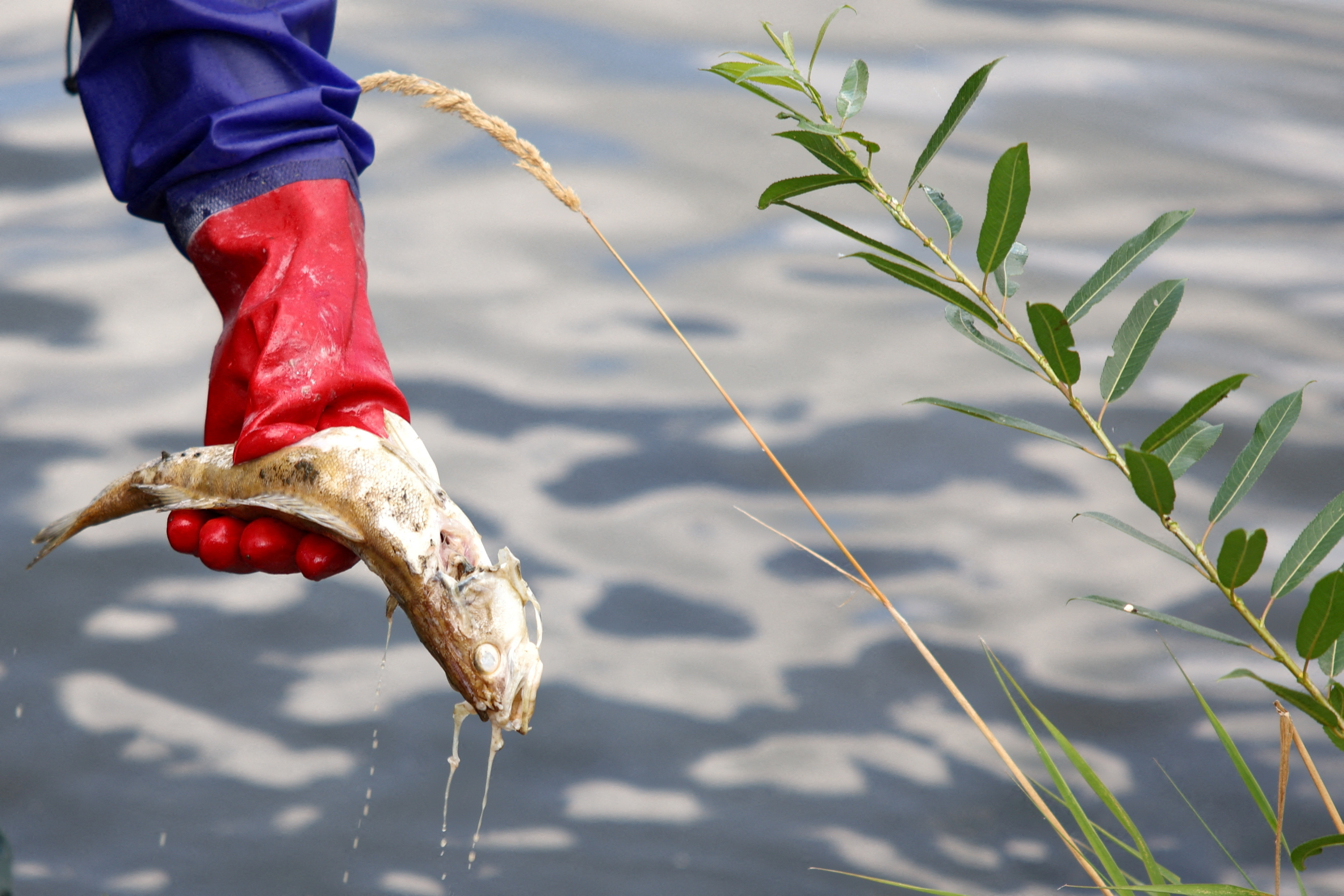Rare toxic algae behind fish deaths in river Oder, say researchers
[1/5]A dead fish is removed from the Oder river as water contamination is believed to be the cause of a mass fish die-off, near the border with Germany, in Krajnik Dolny, Poland, August 15, 2022. REUTERS/Lisi Niesner Purchase Licensing Rights
BERLIN/WARSAW, Aug 19 (Reuters) - A large overgrowth of toxic algae linked to industrial pollution is the most likely culprit behind mass fish deaths in the river Oder, a German research institute said.
Tonnes of dead fish have been found since late July in the river that runs along part of Germany's border with Poland, mystifying authorities from both countries who say they have been working "flat out" to figure out its cause.
The Leibniz Institute of Freshwater Ecology and Inland Fisheries (IGB) said on Friday that Prymnesium parvum was identified in all the samples taken from the river recently.
"When this specific type of algae is present in very large quantities, as is the case in the Oder samples, very high toxin concentrations must also be assumed," said Elisabeth Varga from the University of Vienna, who led the analysis of the IGB samples.
She said a direct connection between the algae and the death of fish and molluscs in the river could be assumed.
Research is still needed on the toxicity of the algae, and it is not yet clear whether humans and other animals could also be affected, the IGB said in a statement.
Polish Climate Minister Anna Moskwa said at a news conference earlier on Friday that more research would be needed to determine the conditions that led to the algae's appearance.
"We see that it rarely appears in the world," she said.
Such a large growth of algae requires elevated salinity levels that could be reached only through industrial pollution, said IGB scientist Tobias Goldhammer.
If nothing was done to decrease salt levels, such toxic overgrowths could occur again during a hot, dry summer, he said.
Sign up here.
Reporting by Miranda Murray and Alan Charlish, editing by Deepa Babington
Our Standards: The Thomson Reuters Trust Principles.

